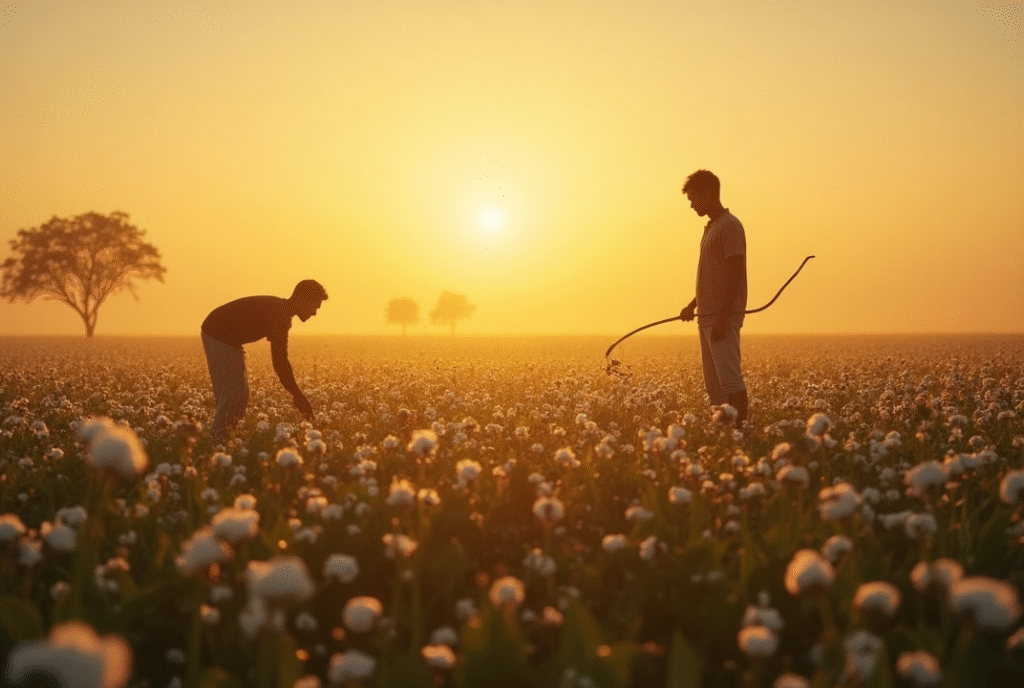Production Perspective
- Home
- Blog
The Perspective of Sustainable Garment Production in Bangladesh.
If we focused on the journey towards sustainable garment production in Bangladesh. Each story focuses on different aspects of the industry, emphasizing ethical sourcing, well-crafted manufacturing ecosystems, and the challenges and opportunities involved in creating a more responsible and environmentally conscious sector.
The Farmer's Cooperative and the Organic Cotton Revolution

The sun beat down on the fields of Rangpur, but the air was filled with a sense of hope. For generations, these farmers had struggled with low yields and crippling debt, trapped in a cycle of chemical fertilizers and pesticides. But things were changing. They were part of a new cooperative, supported by a forward-thinking garment factory in Dhaka, focused on organic cotton production.
“Before, we used to spend so much on chemicals,” said Rahim, a farmer with weathered hands and a hopeful smile. “Now, we use natural compost and pest control methods. The yield is good, and the soil is healthier. My children are healthier too.”
The garment factory, “Green Threads,” had made a commitment to sourcing 100% organic cotton. They provided training and resources to the farmers, guaranteeing a fair price for their harvest. This created a stable income for the farmers and ensured a reliable supply of high-quality, ethically sourced cotton for the factory.
“It’s not just about the cotton,” explained Farida, the factory manager. “It’s about empowering the farmers, protecting the environment, and creating a sustainable supply chain. We believe that ethical sourcing is the foundation of a responsible garment industry.”
The challenges were significant. Organic farming required more labor and expertise. The initial yields were lower than conventional methods. But with perseverance and the support of international organizations and conscious consumers, the organic cotton revolution was slowly but surely taking root in Bangladesh, promising a brighter future for both farmers and the garment industry.
The Zero-Discharge Factory and the Circular Economy
The Buriganga River, once a lifeline for Dhaka, had become a symbol of environmental degradation. But on the outskirts of the city, a new factory was challenging the status quo. “AquaPure,” a state-of-the-art garment manufacturing facility, had implemented a zero-discharge policy.
“We treat all our wastewater on-site,” explained Kamal, the factory’s environmental engineer. “We use advanced filtration and purification technologies to remove pollutants and recycle the water back into the production process. We don’t discharge any harmful chemicals into the river.”
AquaPure had also embraced the principles of the circular economy. They were experimenting with innovative techniques to recycle textile waste, turning it into new fabrics and products. They partnered with local artisans to create upcycled garments and accessories, reducing waste and creating new economic opportunities.
“We believe that waste is a resource,” said Aisha, the factory’s sustainability manager. “We are committed to minimizing our environmental impact and creating a closed-loop system. It’s not just about being responsible; it’s about being innovative and creating a more sustainable business model.”
The investment in sustainable technologies was significant, but AquaPure believed it was essential for the long-term viability of the garment industry. They hoped to inspire other factories to adopt similar practices and transform Bangladesh into a global leader in sustainable garment manufacturing.
The Skilled Workforce and the Ethical Manufacturing Ecosystem
In a bustling industrial zone, a different kind of revolution was underway. “Craftsmanship Collective,” a group of small and medium-sized garment factories, was focused on creating a well-crafted manufacturing ecosystem based on fair labor practices and skills development.
“We believe that our workers are our most valuable asset,” said Rahman, the spokesperson for the collective. “We pay fair wages, provide safe working conditions, and invest in training and education. We want to create a skilled and motivated workforce that can produce high-quality garments.”
The collective had established a training center where workers could learn new skills, from sewing and pattern making to quality control and management. They also partnered with local universities to offer apprenticeship programs and create pathways for career advancement.
“I started as a helper,” said Fatima, a young woman who had completed the training program. “Now, I’m a skilled sewing machine operator. I earn a good wage, and I have a future in this industry.”
The Craftsmanship Collective was also committed to ethical sourcing and transparency. They worked closely with their suppliers to ensure that they adhered to fair labor standards and environmental regulations. They used blockchain technology to track the origin of their materials and ensure traceability throughout the supply chain.
“We want to create a manufacturing ecosystem that is based on trust and collaboration,” said Rahman. “We believe that by working together, we can create a more sustainable and ethical garment industry in Bangladesh.”
These three stories represent just a glimpse of the ongoing efforts to transform the garment industry in Bangladesh. While challenges remain, the commitment to sustainable practices, ethical sourcing, and a well-crafted manufacturing ecosystem is growing, promising a brighter and more responsible future for the sector.
Post Tags :
Share :

EU Associate
About Us
Every product we create begins with a firm commitment to ethical sourcing and culminates in exceptional craftsmanship.
